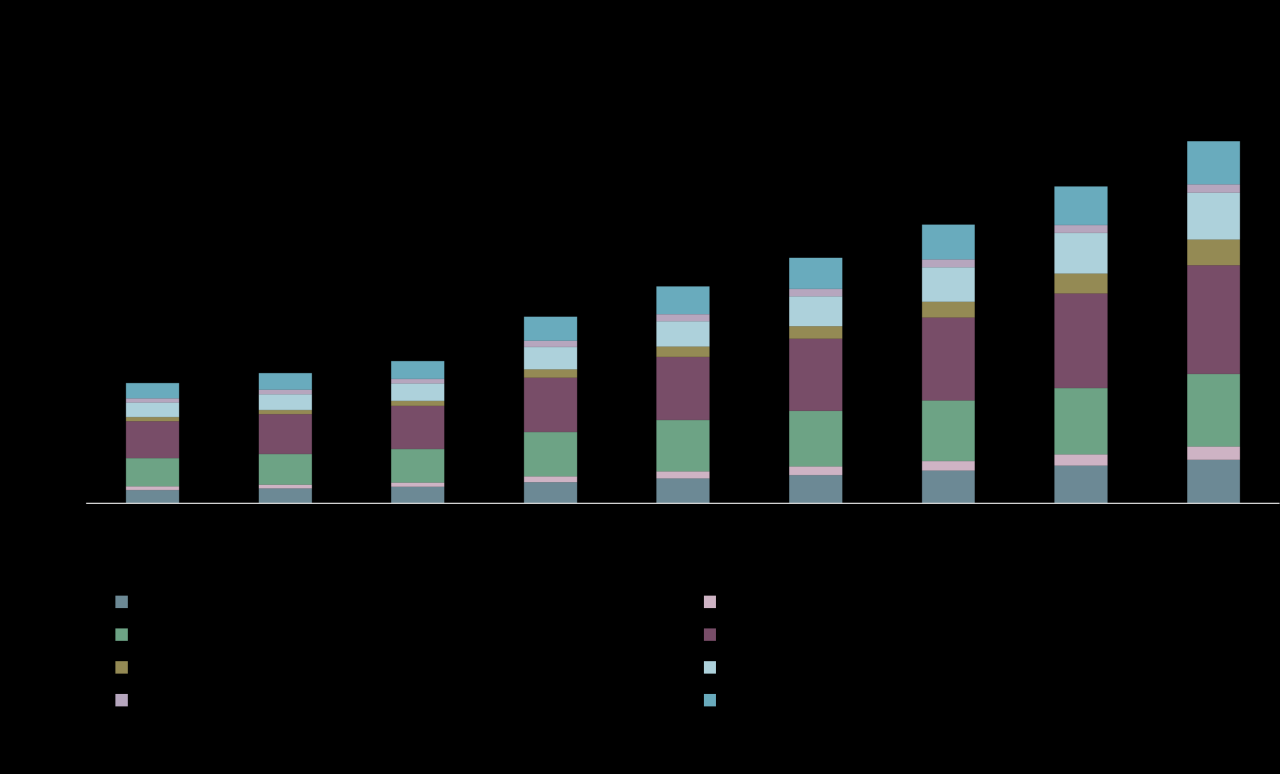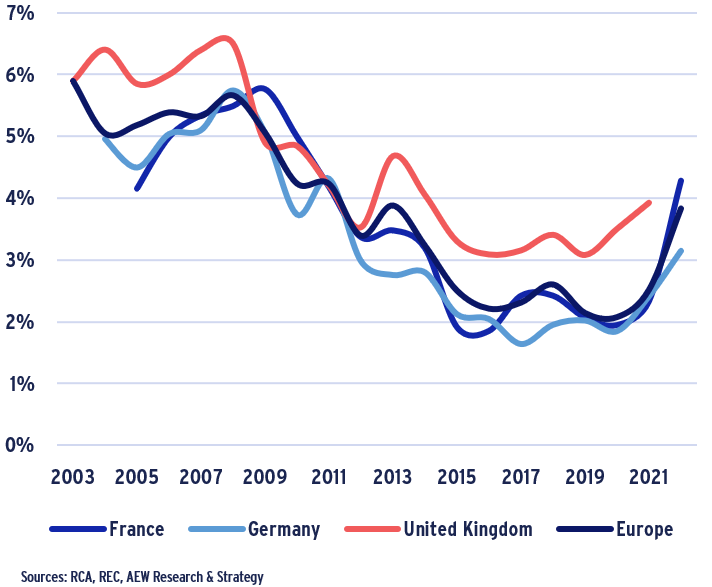Real estate market outlook in post-pandemic Europe: A Comprehensive Analysis

Exploring the real estate market outlook in post-pandemic Europe reveals a landscape reshaped by the effects of the global health crisis. From shifting demands to emerging trends, this analysis delves into the key factors influencing the post-pandemic real estate scenario in Europe.
As we navigate through the various facets of the European real estate market post-pandemic, a clearer picture emerges of the challenges and opportunities that lie ahead in this evolving industry.
Overview of the Real Estate Market in Post-Pandemic Europe

The real estate market in Europe faced significant challenges due to the impact of the COVID-19 pandemic. Lockdowns, travel restrictions, and economic uncertainty led to disruptions in property transactions and market dynamics.
Impact of COVID-19 on Property Prices and Sales
During the pandemic, property prices in some European countries experienced fluctuations. While some regions saw a decrease in prices as demand slowed down, others witnessed stable or even rising prices. Sales were also affected, with a decline in the number of transactions taking place.
Market Trends in Post-Pandemic Europe
Key factors influencing the current state of the real estate market in Europe include changing consumer preferences, remote work trends, and government stimulus measures. The shift towards more flexible work arrangements has prompted some individuals to reconsider their living spaces, leading to potential changes in housing demand patterns.
Emerging Trends in Post-Pandemic European Real Estate
The real estate market in post-pandemic Europe is witnessing several emerging trends that are shaping the industry and influencing property demand and preferences. These trends reflect the changing needs and priorities of buyers and investors in a rapidly evolving landscape.
Remote Work Influencing Property Demand and Location Preferences
With the rise of remote work due to the pandemic, there has been a noticeable shift in property demand towards homes that offer more space, dedicated home office areas, and access to outdoor amenities. Many individuals are now looking for properties located in suburban or rural areas, away from crowded city centers.
This trend is expected to continue as remote work becomes more prevalent in the long term.
Shift Towards Sustainable and Eco-Friendly Properties
In response to the pandemic, there is a growing focus on sustainability and eco-friendliness in the real estate market. Buyers are increasingly interested in properties that are energy-efficient, environmentally friendly, and built with sustainable materials. Developers and investors are incorporating green building practices and technologies to meet this demand for eco-friendly properties.
Rise of Digital Tools and Technologies
The use of digital tools and technologies in property buying, selling, and management has become more widespread in the post-pandemic era. Virtual tours, online listings, digital document signing, and AI-powered property search platforms are transforming the way real estate transactions are conducted.
These digital tools provide greater convenience, efficiency, and transparency for both buyers and sellers in the real estate market.
Regional Variances in the European Real Estate Market
In the post-pandemic landscape, the European real estate market showcases a variety of regional variances, influenced by factors such as government policies and economic conditions. Let's delve into the contrasting conditions across different European countries and between major cities and rural areas.
Real Estate Market Conditions in Different European Countries
- Germany: The German real estate market has remained stable post-pandemic, with a focus on sustainability and energy efficiency in construction.
- Spain: Spain's real estate market has seen a surge in demand for vacation homes as remote work becomes more prevalent.
- France: In France, the market has shown resilience, with a growing interest in properties in suburban areas due to a shift towards more flexible work arrangements.
Challenges and Opportunities in Major Cities vs. Rural Areas
- Major Cities: Major cities like London, Paris, and Berlin face challenges such as high property prices and limited space, leading to a trend of urban sprawl. However, they also present opportunities for investors due to high rental yields and demand.
- Rural Areas: Rural areas offer a lower cost of living and a more relaxed lifestyle, attracting individuals seeking a change from urban environments. However, they may face challenges in terms of infrastructure and access to amenities.
Impact of Government Policies and Economic Conditions
- Government Policies: Policies promoting sustainable construction, affordable housing, and urban development play a significant role in shaping the real estate market across Europe. Incentives for energy-efficient buildings and tax breaks for first-time homebuyers impact market dynamics.
- Economic Conditions: Economic factors such as GDP growth, interest rates, and employment rates influence the demand for real estate. Countries with stable economies tend to attract more investment in the real estate sector.
Investment Opportunities and Risks in the Post-Pandemic Real Estate Market

In the post-pandemic European real estate market, there are various investment opportunities and risks that investors need to consider. It is crucial to understand the landscape and make informed decisions to maximize returns while mitigating potential risks.
Residential Properties
Investing in residential properties post-pandemic can be a lucrative opportunity as people continue to prioritize comfortable living spaces. The demand for housing is expected to remain strong, especially in urban areas where remote work is becoming more common. Investors can consider rental properties or affordable housing projects to capitalize on this trend.
Commercial Properties
Commercial properties, such as office spaces and retail outlets, have faced challenges during the pandemic with remote work and online shopping trends. However, there are opportunities for investors in repurposing commercial spaces for mixed-use developments or converting office buildings into residential units.
Adapting to the changing needs of businesses and consumers can lead to profitable investments.
Industrial Properties
Investing in industrial properties, such as warehouses and distribution centers, presents a promising opportunity post-pandemic. The rise of e-commerce and demand for logistics facilities have increased the value of industrial real estate. Investors can explore partnerships with logistics companies or invest in modernizing existing industrial properties to meet the evolving market demands.
Risks and Mitigation Strategies
While there are lucrative investment opportunities, it is essential for investors to be aware of the risks associated with the post-pandemic real estate market. Factors such as economic uncertainty, fluctuating interest rates, and regulatory changes can impact the value of properties.
To mitigate risks, investors should conduct thorough market research, diversify their portfolio, and consider long-term investment strategies. Additionally, maintaining liquidity and staying informed about market trends can help investors navigate uncertainties and maximize returns in the current European real estate landscape.
Outcome Summary

In conclusion, the real estate market in post-pandemic Europe presents a dynamic environment characterized by innovation, challenges, and promising investment prospects. Navigating through regional variances, emerging trends, and investment opportunities is crucial for stakeholders looking to thrive in this transformed landscape.
Answers to Common Questions
What were the main effects of the pandemic on the European real estate market?
The pandemic led to fluctuations in property prices, disrupted sales processes, and influenced market trends towards more digitalization and sustainability.
Which European countries have seen the most significant changes in their real estate markets post-pandemic?
Countries like Spain, Italy, and Germany have experienced notable shifts in their real estate landscape, each facing unique challenges and opportunities.
What are some strategies for mitigating risks when investing in the post-pandemic European real estate market?
Diversifying investments, thorough market research, and staying updated on government policies and economic conditions are essential for reducing risks and maximizing returns.

